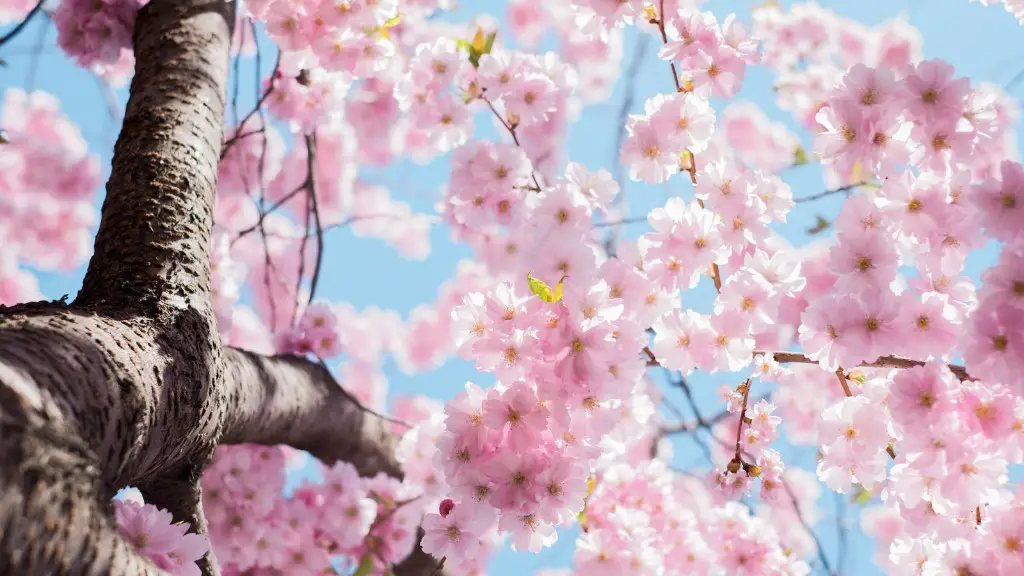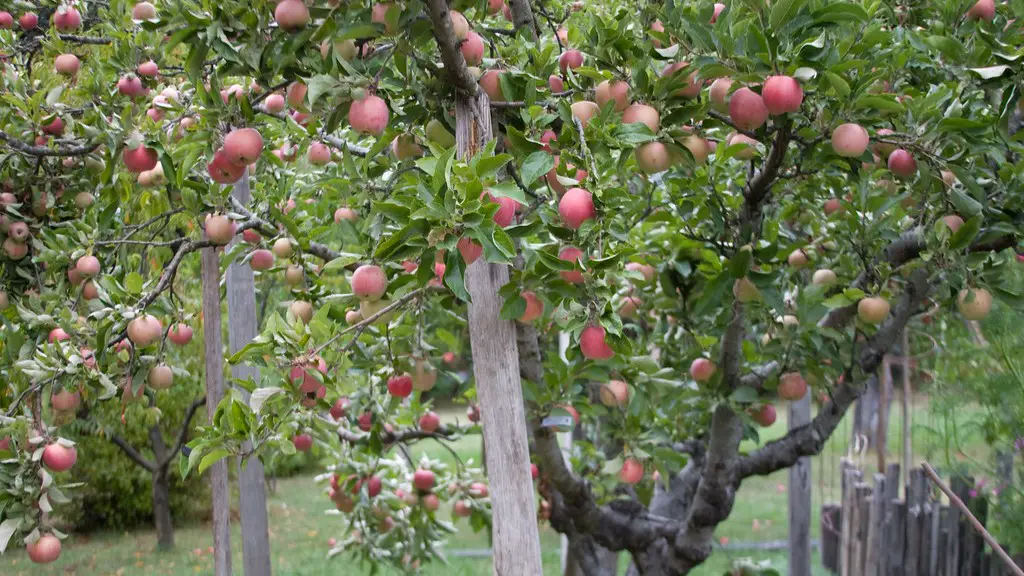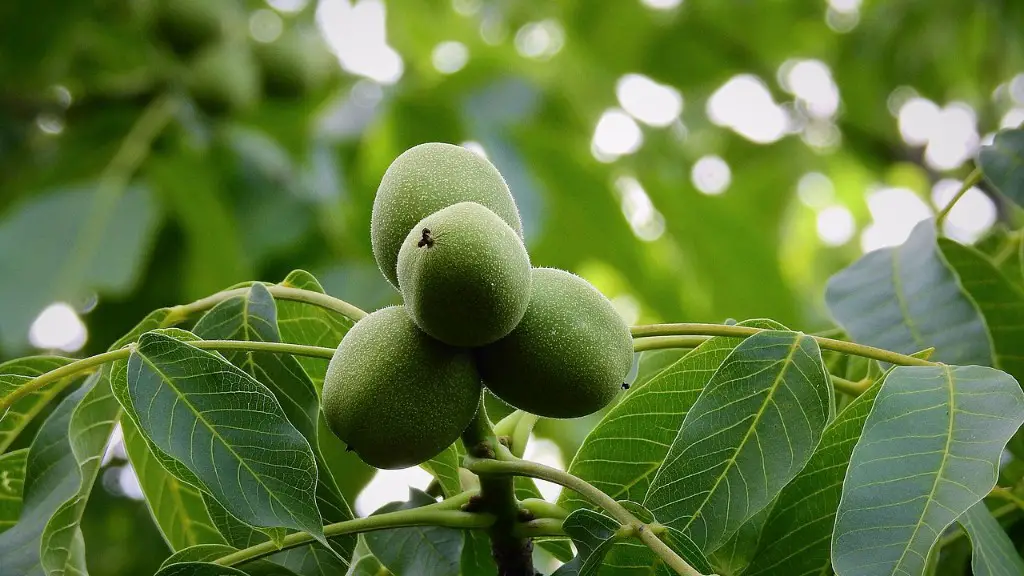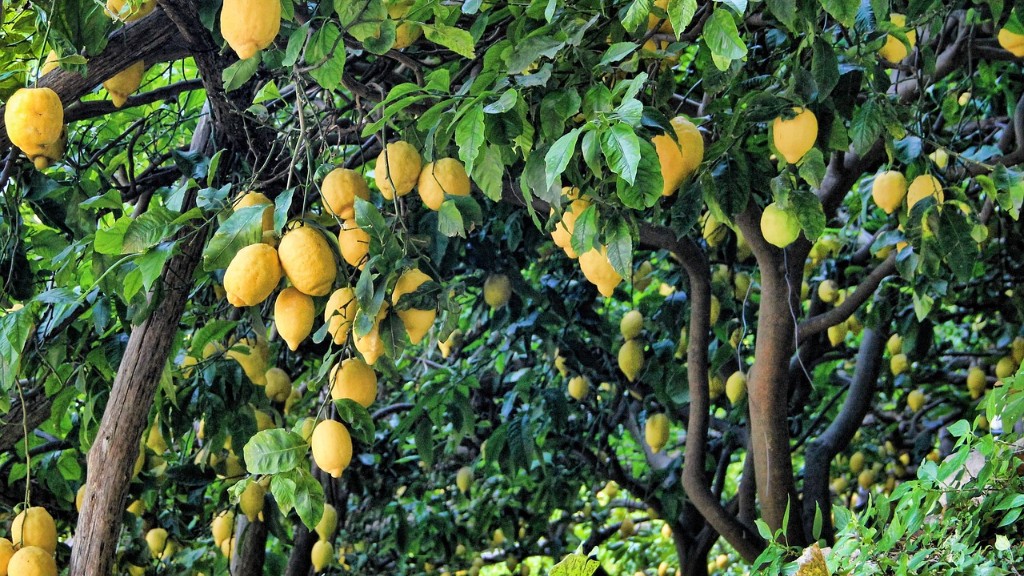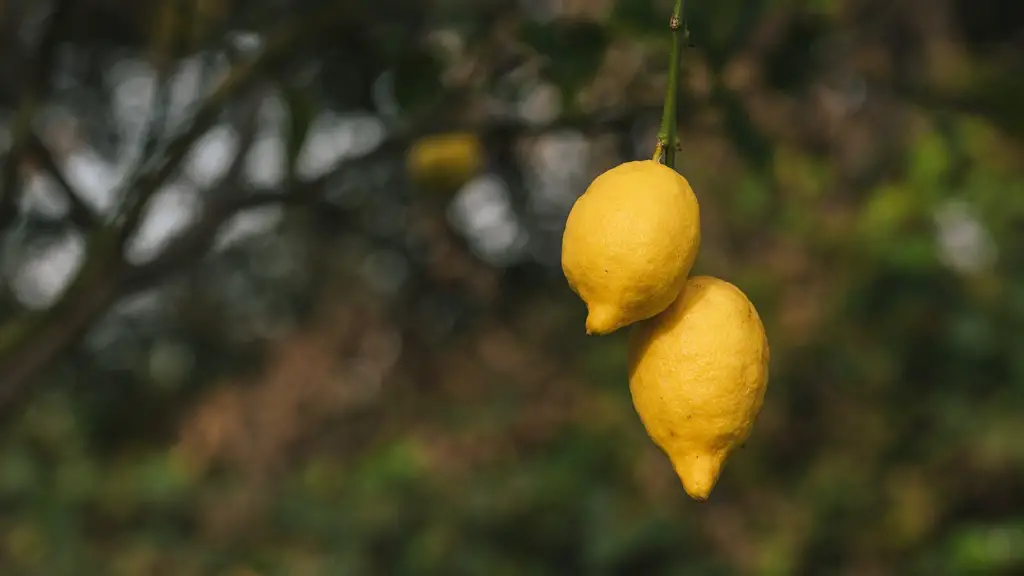Starting to grow an apple tree from a seed is not a difficult endeavour when one knows the appropriate steps. First, the apples should be procured that, when eaten, possess a desirable flavor. From these, the core should be removed, and the seeds scooped out. Seeds are often surrounded by an outer layer, which needs to be washed off to expose the brown kernel beneath. Then, the seeds need to be soaked in some form of acidic detergent overnight to soften the outer husk. After this, the seeds should be dried, keeping them in a cool, dry place for roughly one week.
Once the seeds have dried, they should be planted in a shallow hole and covered with soil. Ideally, a planter that can accommodate a large root system should be chosen, since if the tree is intended to stay in that spot for some time, it should be given enough space to grow. In addition to the planter, a well-draining potting soil and mulch should be used. The apple tree should be kept moist and should be watered regularly, in addition to receiving just enough sunlight to help the plant mature. Once the tree starts to grow significantly, it should be pruned correctly.
Pollination is also an important factor to take into consideration when growing an apple tree from a seed, since this is a critical aspect in ensuring a successful harvest. If the tree is planted indoors, or if it is located in an area with few trees, then manual cross-pollination is usually necessary. This can be done using a soft brush and transferring pollen from the male to the female flowers.
Fertiliser must also be provided, especially in the early stages. Apple trees that are being grown indoors should be fertilized more often than those grown outdoors, as they lack the nutrients that are naturally available in soil. After the tree starts bearing fruit, organic fertilizers without excess phosphorus should be used to help the tree retain its nutrients. If the tree is planted outdoors, particularly in a cooler climate, it may need to be covered in order to protect it from extreme temperatures.
Ultimately, it is important to ensure that the tree is kept healthy, as apples that are harvested from a healthy tree often have a superior flavor. Regular inspection of the tree should be done to ensure that pests or diseases are not present, and pests should be removed manually if spotted. With the proper care, the apple tree can enjoy a long and productive lifespan.
Pruning Apple Trees
Pruning an apple tree is an important step in helping the tree produce healthy and delicious fruit. Ideally, pruning should take place when the tree is young and formative, allowing the tree to develop into a desirable shape and size. Young trees should be pruned to create an even, open centre, allowing air and light to enter and make the tree more structurally stable. Pruning also helps the tree to develop strong scaffolding branches. If a young tree hasn’t been correctly pruned, the centres of old apple trees should still be open to ensure their structure remains sound and they receive enough sunlight.
Older trees should also be pruned regularly to remove damaged, poorly placed or overcrowded branches. Pruning should also be done to remove weak branches and those that are growing at awkward angles, as these can impede the growth of neighbouring branches. Additionally, removing crossing branches and any sprouts at the bottom of the tree will help keep it healthy and increase the airflow.
The best time to prune an apple tree is during late winter or early spring when the tree is still dormant and leafless. Pruning should be completed before the sap starts to rise. If pruning is done in the summer, the cuts can be open to infection and sap loss. Pruning should be done using sharp tools, as this will encourage the tree’s natural healing process, and tools should be cleaned with some form of disinfectant between cuts to avoid spreading infections.
Propagating Apple Trees
Propagating an apple tree is the process of reproducing woody plants without sowing seeds. This process allows the same species of tree to be reproduces exactly, ensuring all the offspring share the same characteristics. When propagating apple trees, two popular methods are used – grafting and air layering. Each of these processes should be completed in either late winter or early spring.
Grafting, or splicing, is mainly used for trees that are already established, and involves cutting a branch from a mature tree and splicing it into an existing tree’s rootstock. This typically uses a method known as whip and tongue grafting, which requires smaller branches containing buds to be cut from the parent tree and then held to the rootstock. The parts are then held together with tape or tapered sticks, and ultimately bonded with some type of grafting compound.
Air layering is a method that involves scoring the bark of a branch and then covering the wound with moist soil. Then, the branch is covered with paste, plastic wrap or any other material until the roots start to grow. Once the new roots have formed, the branch can be cut off and transplanted. Air layering is often used when an apple tree is too tall to be grafted.
Harvesting Apples From Trees
When harvesting apples, it is important to pick fruit at the right time in order to get the best quality. The best way to tell when apples are ripe is by pressing them gently and judging the skin. Apples that are still hard should be left on the tree to ripen further, as those that are picked before they are ripe will not keep or have a good flavor. Fruits that have lost their color should also be skipped as this indicates ripening has passed its peak.
In order to pick the apples, a ladder should be used to reach the trees that are too tall to be reached by hand. The ladder should be placed on a stable surface and supported on both sides, as well as placed as close as possible to the tree. It is also important to take care when harvesting apples from the branch, as pulling them off too forcefully can damage the branch.
In addition, harvesting apples during the hot part of the day should be avoided, since this can cause the fruit to break down or lose flavor. Apples that have been harvested should be stored immediately in a cool, airy place, as if left outdoors in the heat, the taste can be adversely affected. Apples should also be stored in a single layer, as placing them on top of each other can cause them to bruise.
Storing Apples
Apples can be difficult to preserve and store, especially if they are in bulk. In order to make sure they stay fresh for longer, certain steps must be followed. Apples that are going to be used within a few days should be stored in the refrigerator, whereas apples that will be consumed after a longer period of time should be kept in a colder, darker area such as a basement or garage. This is because apples are sensitive to temperature and light.
When storing apples in the refrigerator, they should be placed in a single layer and kept away from other types of fruit, as the apples can uptake the other fruit’s odour and taste. If the apples are stored in the freezer, they should be packed into storage containers that are tightly sealed and labelled with the date of storage. Frozen apples can be kept for up to 12 months.
Another storage option is drying apples. After removing the cores, the slices should be laid out on a cooling rack in a single layer and placed in an oven that has been preheated to 180°F. The apples should then be left in the oven for three to four hours, or until dry and leathery. Once the apples are dried, they should be stored in a sealed container in a cool, dry area, where they can be kept for up to a year.
Preventing Pest and Disease
Maintaining an apple tree’s health is important as it is susceptible to many pests and diseases. The best way to keep an apple tree healthy is by providing it with the correct level of sun, water and nutrients. Root rot, which is caused by excessive moisture, should be avoided. In addition, a regular spraying schedule should be established, usually including insecticides, fungicides and miticides. Fungal diseases, such as apple scab, black rot and powdery mildew, should be targeted with specific fungicides.
In addition, apple trees can be affected by pests such as birds, aphids and moths. To help prevent birds from taking bites from the fruit, netting should be stretched over the tree and/or loud noise can be used to scare them away. If aphids are present, pruning and removing affected branches, as well as washing the tree with a hose or soap water, will help to get rid of them. Common moth infestations, such as codling moth, can be prevented by removing fallen fruit and spraying with an insecticide at specific intervals.
To ensure a healthy harvest, the tree should be regularly checked and maintained. Pest and diseases can spread quickly, so figuring out the cause and preventing it early on is important. Moreover, if the tree sustains any damage, it should be pruned immediately to help it heal and remain healthy.

